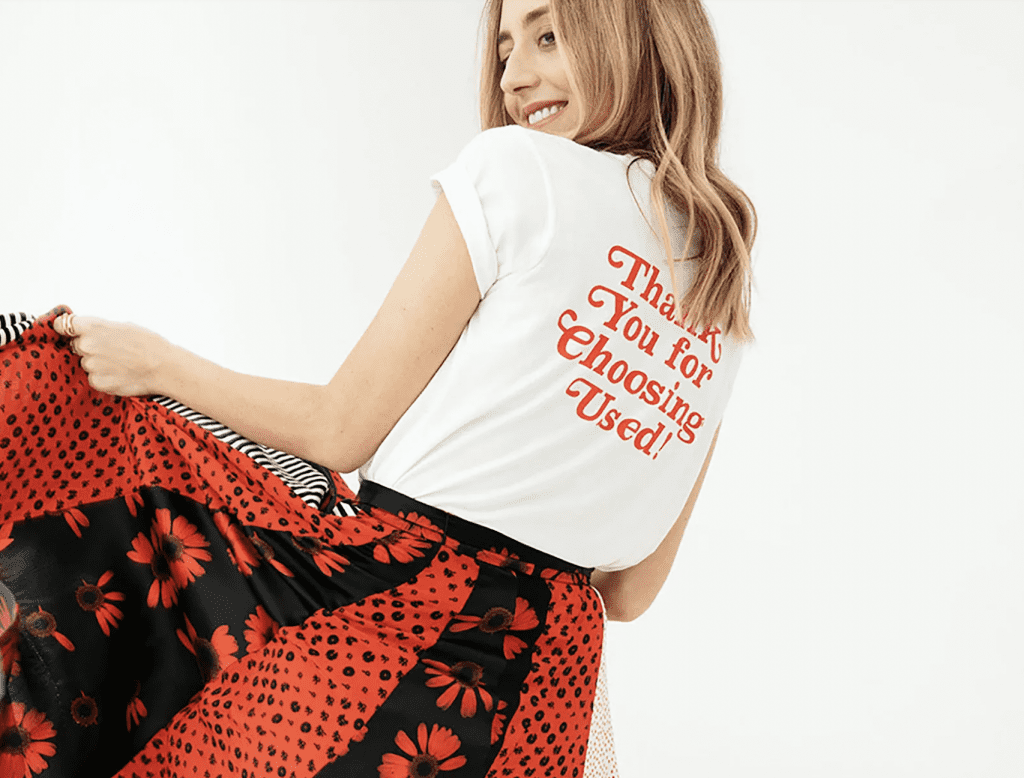The RealReal and threUP fared well during the third quarter, as resale, a market that is slated to rake in $77 billion dollars per year by 2025 thanks in large part to demand from younger consumers, is showing its worth ahead of the holiday season. The two resale companies respectively reported a rise of 50 percent and 35 percent in sales for the three-month period ending on September 30. ThredUP revealed that its revenues totaled $63.3 million, what it says is an “all-time quarterly high,” while San Francisco-based The RealReal recorded sales of $118.84 million for the quarter, as categories like watches and women’s apparel, among others, continued to boom.
Giving a high-level breakdown in its Q3 report, Oakland, California-headquartered thredUP stated that not only were its sales at a record-level, but the number of active buyers – 1.4 million (up by 14 percent on a year-over-year basis) – and orders – 1.3 million (up by 28 percent YoY) – also nabbed highest-ever status for a quarter. The company reported that its gross margin for the three-month period was up by 73 percent compared to Q3 2020 and gross profit rose by 41 percent year-over-year. Finally, net loss totaled $14.7 million for the quarter, up from Q3 2020’s $11 million.
In a statement on Tuesday, thredUP CEO and co-founder James Reinhart said, “Supply continues to appear endless, [and] demand for secondhand is increasing with more first-time buyers trying thredUP.”
The RealReal also reported Q3 revenue this week, on the heels of releasing its latest monthly business update, which noted gains across all metrics, and an uptick in sales for watches, men’s, and women’s apparel, which were the company’s “fastest growing categories” in October.
Despite enduring legal squabbles, including two outstanding matters initiated by shareholders (in connection with which The RealReal confirmed stipulated settlements this week), the luxury reseller posted revenue of $118.84 million for the 3-month period, up 53 percent compared to Q3 2020 and up 46 percent compared to pre-pandemic Q3 2019. The luxury reseller revealed that its gross merchandise value (i.e., the value of the luxury goods that it sold during the quarter) increased by 50 percent and 46 percent compared to the same periods in 2020 and 2019, respectively. Meanwhile, for the 757,000 orders it processed during Q3, the average value amounted to $486, a 9 percent boost on a year-over-year basis.
Founder and CEO Julie Wainwright said this week that she believes the negative operational and supply impacts of COVID on The RealReal’s business are behind it, and that the company is “experiencing very positive trends and we believe these trends will continue through the end of the year and into 2022.”
Elsewhere in the market, social-centric resale platform Poshmark revealed that its Q3 revenue rose by 16 percent to $79.7 million. (The company missed analysts’ average expectations for Q3 sales of $82.7 million, and also pointed to issues stemming from advertising-specific privacy changes to Apple’s iOS system. The changes, which went into effect in April, have “really increased the cost of digital advertising and decreased the efficacy when running targeted marketing programs,” Poshmark founder and CEO Manish Chandra said this week.)
Gains for The RealReal, thredUP
The resellers’ gains have been driven in part by the fact that the “unique [resale] business model is largely insulated from the supply chain shortages and certain of the inflationary impacts many retailers are experiencing,” as Wainwright put it this week, referring to the currently tumultuous state of retail, including supply shortages and shipping delays. The RealReal president Rati Levesque echoed this in an earnings call this week, saying, “We don’t have any supply chain issues. So, our shelves are full of supply.”
Shortages and increasing prices – and an overarching lack of holiday sales this year – are prompting consumers to look to the secondhand market with more vigor than they have in previous holiday seasons. A recent survey from Mercari shows that 77 percent of Americans expect to buy at least one secondhand item this holiday season, which translates to an approximate $69.2 billion in secondary market sales between October and December 2021, an increase of almost 25 percent from the same period last year.
As for the impetus behind the growing number of pre-owned product buyers this year: Mercari found that 72 percent of customers are looking to save money; 32 percent cited the ease with which they find secondhand holiday shopping; 22 percent pointed to sustainability concerns; and others said that supply chain issues are encouraging them to engage with the secondary market.
The enduring success of the resale model, particularly amid supply chain disruptions, is likely to force hold-out brands to pay more attention to the segment, both as a way to hedge some supply-specific risks down the road and to reach a sizable pool of (potentially different) consumers, particularly those of the millennial and Gen-Z ilk, who are very comfortable with – and in many cases, enthusiastic about – the pre-owned space and the benefits that come with it, such as lower prices and the element of circularity.
This means that competition is not only mounting among resale-specific players, which are busy vying for consumers’ attention and dollars, but with brands, themselves, which are increasingly wading into the pre-owned market.
“Deep pocketed and established apparel brands, such as Levi Strauss & Co and Urban Outfitters, for instance, have also launched their own secondhand businesses, furthering competition in the space,” per CNBC. At the upper end of the spectrum, luxury brands are putting their money behind resale players. Gucci-owner Kering has a stake in Vestiaire Collective, and Chanel has invested in Farfetch, which maintains a growing resale arm. Ultimately, as TFL dove into back in 2019, if trends in resale continue, we can expect luxury brands to co-opt this channel by bringing it in house in order to share in the revenues, but maybe more importantly, to exert control over the conditions in which their pre-owned offerings are marketed and sold.











